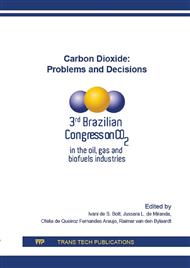p.19
p.30
p.38
p.46
p.57
p.65
p.71
p.78
p.85
CO2 Pipelines: A Thermodynamic Modeling with Pre-Salt Applications
Abstract:
This paper approaches CO2 pipelines operating with high dense compressible flow for Enhanced Oil Recovery (EOR) and/or Carbon Capture & Geological Storage (CCGS). The idiosyncrasies of high pressure CO2 flow are discussed and an appropriate and rigorous steady-state compressible flow pipeline model is disclosed. The model gives three Ordinary Differential Equations (ODE) which result from one-dimensional, one-phase, Mass, Momentum & Energy Balances along the pipeline axial direction. This ODE set is numerically integrated leading to profiles of temperature, pressure and inventory along the pipeline, which are basic for design. An example is explored in the context of a hypothetical EOR CO2 pipeline aligned to the production of CO2 rich natural gas in the Pre-Salt offshore oil and gas fields on the southeast coast of Brazil.
Info:
Periodical:
Pages:
57-64
Citation:
Online since:
March 2016
Keywords:
Price:
Сopyright:
© 2016 Trans Tech Publications Ltd. All Rights Reserved
Share:
Citation:


